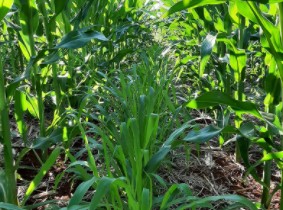By Kaine Korzekwa
The old adage “variety is the spice of life” can also be true on the farm. Planting the same crop over and over, year after year, can quickly deplete the soil of valuable nutrients. The crops eventually won’t produce as much, and the farmer will lose profits.

Maize can be intercropped with brachiaria ruziziensis in the second crop to improve the soil in the field. Intercropping means growing two different crops on the field at the same time.
Switching up the crops planted is a farming practice used in areas across the world. Researchers in Brazil wanted to test crop diversification practices to help their farmers produce more and grow their profits. Tiago Santos Telles, a scientist at the Instituto Agronômico do Paraná (IAPAR) in Brazil, led the economic research.
In Brazil, the warmer weather allows for more than one harvest during the year. There is a summer crop, which is usually soybeans in Brazil. Then there is another crop grown in autumn-winter, commonly corn or wheat.
The researchers tested different autumn-winter crops over a period of six years. They took numerous measurements, such as crop yield, operating costs, and profit for each production model they tested.
“Soybean has been grown in crop systems with low crop diversity in Brazil,” Santos Telles says. “However, these models are becoming less efficient and sustainable. Our study helped identify that more diverse crop systems can have better economic results than those with less diversity.”